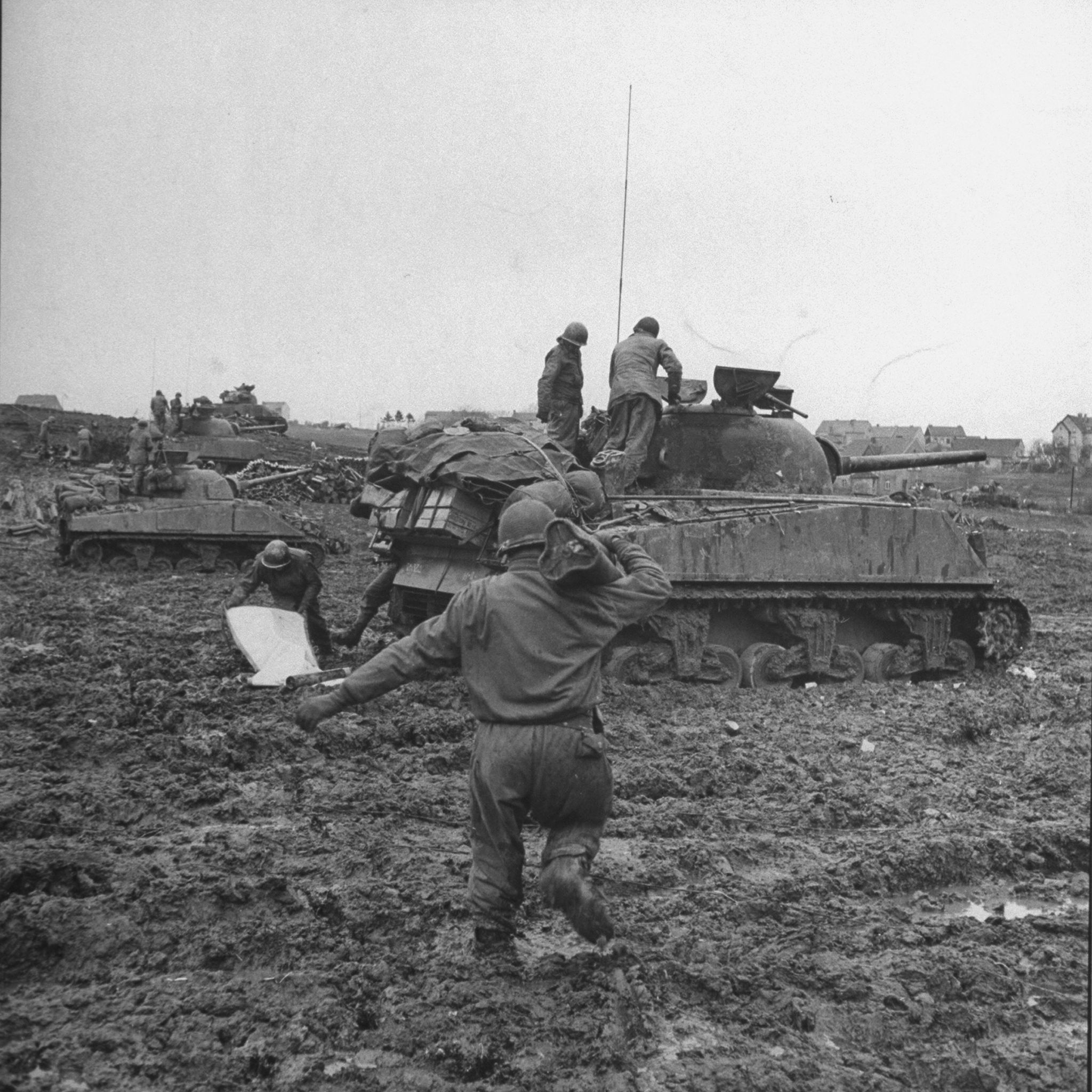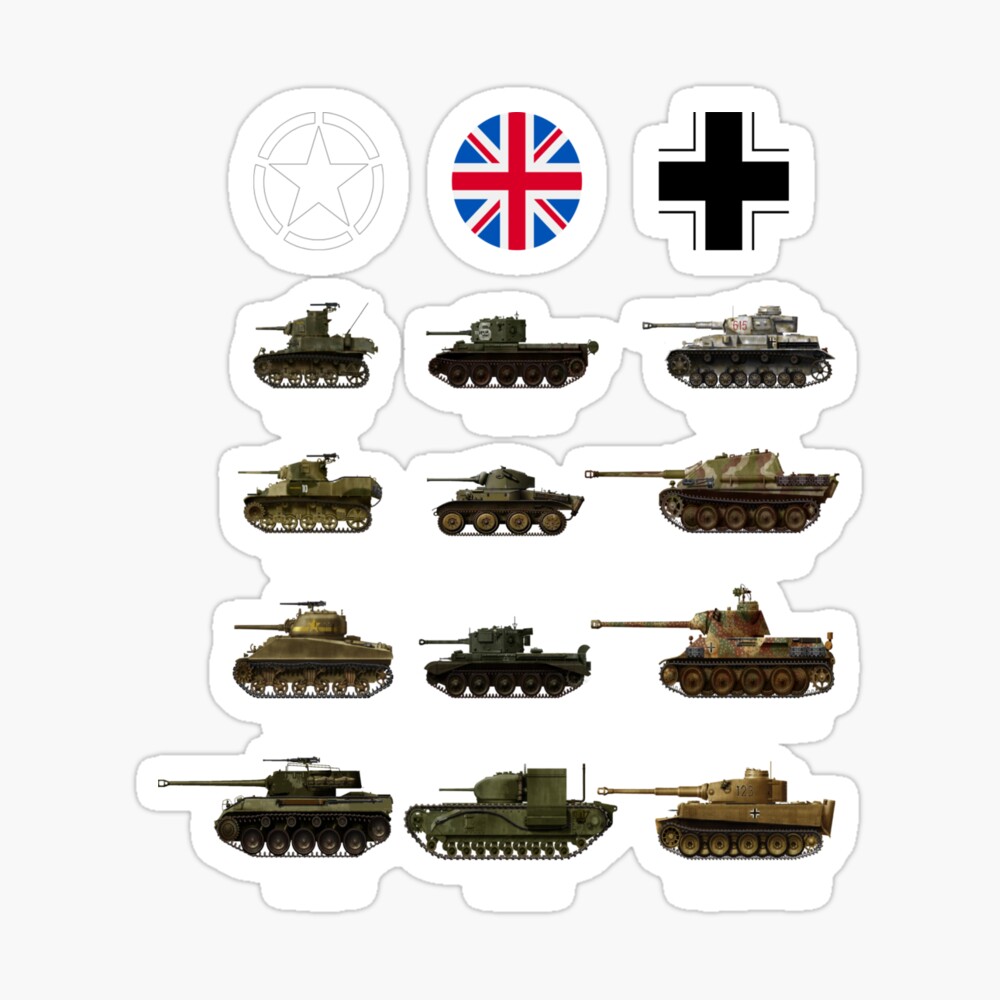American Tank Ww2 - US tanks were inferior to German tanks in WWII and were cut into stripes, or so people thought. After all, Sherman is called "Ronson" because he "lights up every time". However, the Ronson Corporation didn't start using that term to advertise their light trucks until the 1950s, and the Sherman was a very powerful tank on the battlefield.
Thanks to media reports in movies and video games, the Medium Tank, M4 Sherman is remembered today as a lightly armored tank with a weak gun. However, this image is taken out of the context of the war in which it was fought. Against the Panzer III and Panzer IV tanks in the first battle, the Sherman's 75 mm M3 short-barreled gun was capable of delivering destructive blows. Additionally, the tank's frontal armor was adept at deflecting German fire.
American Tank Ww2
When new German tanks like the Panther and Tiger appeared on the battlefield, the Sherman's fighting ability was reduced to a tank-on-tank fight. To combat the new threat, the Sherman was fitted with heavy frontal armor and a new gun. In 1944, the US introduced the long-range 76mm M1 cannon that could penetrate a Tiger's armor from the front. The weapon first saw action with the US Tank Destroyer Battalion. Mounted on the M18 Hellcat light tank destroyer, the 76mm M1 was a menace to German vehicles.
Historic Military Vehicles Sold At 2018 Rock Island Auction
In 1946, the US Army Ballistics Research Laboratory conducted a study of battles fought by the 3rd and 4th Armored Divisions in 1944. The study looked at 30 guns and saw that the Sherman had a kill ratio of 3.6 to 1. against the German Panther. While part of the Sherman's success is due to its new gun and cannon, other military factors must be considered.
In 1944, it was the Germans who resisted the invasion. Air superiority was achieved by joint forces. Air support and strategic bombing severely damaged German industrial capacity and slowed the movement of parts, fuel and ammunition by supply trucks. As a result, the Germans were unable to carry most of their manufactured tanks, with many left for storage or accommodation. Furthermore, many of Germany's tank aces had been killed since before the war, according to Michael Wittmann. German tanks are being reinforced by unknown soldiers and sent against the veterans of Italy and North Africa.
However, despite the superiority of the 76mm M1, the preferred weapon is the 75mm M3. Why would the military want a gun with a short barrel that would make a Panther or Tiger commander laugh? The answer is the reality of war in the European theater. Contrary to what the media portrays, most Allied tank units on the western front were against anti-tank guns, infantry and fortified positions such as bunkers.
As mentioned earlier, the Germans were unable to deploy their tanks when the war was about to start. They didn't have much to start with. About 9,000 Panther tanks were built between 1943 and 1945 and less than 1,400 Tiger I were built between 1942 and 1945. Count the tanks destroyed before 1944, those under construction, and which could not be registered for one reason or another, and the peak of the Panther's first combat strength in 1944 was on September 2, 304. However, that same month, the Panther scored 692. By comparison, the US averaged 2,000. Sherman tanks for the Army.
A Replica Of Wwii's Most Feared Enemy Tank Arrives At The Museum Of American Armor As The Nation Marks Wwii 75th Anniversary Milestones
With that in mind, the Sherman would be inferior to engaging in a tank battle with a Panther or Tiger. For most of your engagement against soft targets, the M3 75mm and M4 105mm guns are superior. Although the 105mm howitzer fired a larger projectile than the 76mm M1, its shorter barrel propelled the heavier projectile at a slower velocity. While it can fire an anti-tank shell high enough to penetrate the Panther's armor, it must be fired at a high angle and with great accuracy to launch the slow, heavy shell at the target. But the 75mm and 105mm guns were originally used to fire high-explosive shells. In fact, about 80% of the shots fired by all nations during WWII were HE and smoke.
The same BRL study that found a higher Sherman and Panther kill rate also looked at the lethality of US artillery and HE shells because those were the most common shells used. The study eliminated one HE shell from each gun that fired during the field battle and calculated the number of damages within a 20-foot radius. The 105mm produced about 1,010 pieces of shrapnel and the 75mm produced 950. On the other hand, the M3 90mm long cannon of the last war produced 672 pieces of shrapnel and the 76mm produced 560 alone. weapon speed, he was able to use a long projectile filled with high explosive charge than long guns. For this reason, it's best to eliminate most of the targets encountered in battle.
Although the Sherman had its drawbacks, such as its elevated position (which gave the crew a more spacious and comfortable fighting compartment), it was a very useful tool for the job at hand. Accompanied by tank destroyers and supported by air cover, columns of American tanks crossed Europe and broke through German defenses on their way to Berlin. by the United States Army in World War II and the Korean War. A top speed of up to 55mph (89km/h) was achieved by keeping the gears to a minimum, using the new Torqmatic automatic transmission and providing a lightweight car with the same big gun used in some of the bigger ones. Sherman tank.

The M18 Hellcat was the result of the development of fast tank destroyer prototypes around the year 1941. Production in the summer of 1943, the M18 saw military service for the first time in the spring of 1944. The M18 was first used in the Western Europe, but continued to a lesser extent in Italy and the Pacific. Production continued until October 1944, with 2,507 units built.
American Tanks & Afvs Of World War Ii (ebook), Michael Green
The Hellcat was the best US tank destroyer of World War II. The death toll was greater than tanks or tank destroyers designed by US forces in World War II.
There were 526 murders: 498 in Europe, 17 in Italy and 11 in the Pacific. The death to loss ratio in Europe is 2.3 to 1, and the death to loss ratio is 2.4 to 1.
The M18s "... originally were not used for tank combat, but were often used in improvised operations, usually aimed at fire support for infantry."
Although the M18 was withdrawn from service in the United States shortly after the end of World War II, a variant, the M39 Armored Utility Vehicle, served in the Korean War, and the M18 continued in service in some countries until 1995.
Road Warriors: American Trucks And Suvs Are Now Longer Than The Tanks That Fought In World War Ii
The M18 Hellcat exemplifies the perfect balance of fire, armor and mobility in armored vehicle design. Despite its excellent mobility and powerful main gun, the M18 Hellcat also has its drawbacks, namely thin armor and a highly explosive shell for its main gun. Journalist Stev J. Zaloga described the overall design of the M18 as "poorly balanced" and said "the Hellcat's combat story is about the training and dedication of its fighters." Sailor, not in your evil design."
When the Tank Destroyer Force was formed in 1941, its commander, Lieutenant Colonel (later General) Andrew Davis Bruce saw units equipped with something faster than a tank, with a better gun but more armor to allow for speed; a cruiser instead of a battleship.
He was opposed to the 3-inch M10 Gun Motor Carriage because it was too heavy and slow for its usefulness.

And later to the 90mm M36 Gun Motor Carriage because it was an M10 with a bigger gun.
American Ww2 Tanks
The United States Ordnance Department made several attempts to provide such a vehicle using weapons (37 mm, 57 mm, 3 inch, 75 mm, and finally the lightest 76 mm of 1942–1943) and available technology, including a 3 inch. also on the fast M3 Light Tank chassis.
The M18 is the product of a long line of research vehicles designed to deliver the desired engine.
In December 1941, the Ordnance Department issued an order for the design of a fast tank destroyer using Christie suspension, a Wright-Continental R-975 radial aircraft and a 37 mm gun on the chassis of the Light Airborne Tank T9 as a 37 mm Motorized T42 gun.
In April 1942, the army requested that the 37mm cannon be replaced with a 57mm and that a coil spring strut be replaced with the Christie suspension.
Watch: 18 Ton Us Tank Craft From Wwii Unearthed In English Field
Sig p365 tulster holster, sig p365 iwb holster, sig holsters p365, sig p365 sas holster, sig p365 xl holster, sig p365 hybrid holster, appendix holster sig p365, safariland holster sig p365, sig p365 belt holster, sig p365 holster, sig p365 purse holster, sig sauer p365 holster
0 Comments